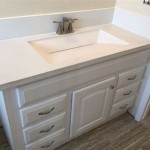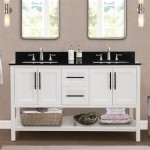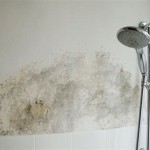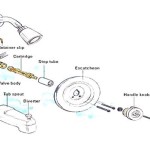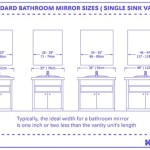Should You Use Chalk Paint On Bathroom Cabinets? Essential Aspects to Consider
When it comes to giving bathroom cabinets a makeover, chalk paint has become increasingly popular. Its ease of use, affordability, and ability to create a distressed or vintage look have made it a favorite choice for DIY enthusiasts. However, before you start painting, it's crucial to understand the essential aspects of using chalk paint on bathroom cabinets. This article explores the key factors to consider to help you make an informed decision.
1. Humidity Resistance: Bathrooms are known for their humidity, which can affect the durability of chalk paint. While chalk paint is generally water-based and dries quickly, it's not inherently waterproof. To ensure your painted cabinets withstand the bathroom environment, apply a protective topcoat, such as polyurethane or varnish.
2. Durability: Chalk paint is typically more fragile than traditional latex or enamel paints. It can chip or scratch more easily, especially in high-traffic areas like bathroom cabinets. To enhance durability, use a primer to seal the surface and consider adding a durable topcoat.
3. Maintenance: Chalk paint has a matte finish that may show wear and tear over time. To keep your painted cabinets looking fresh, regular cleaning is necessary. Use a soft cloth and mild detergent to avoid damaging the finish. Avoid using abrasive cleaners or sponges.
4. Compatibility with Existing Cabinetry: Chalk paint can be applied to various surfaces, including wood, laminate, and metal. However, it's essential to ensure compatibility with your existing bathroom cabinets. Test the paint in an inconspicuous area to check for adhesion and any potential reactions.
5. Ventilation: As chalk paint is water-based, proper ventilation is necessary during application and drying. Open windows or use a fan to circulate the air and prevent moisture from accumulating.
6. Application Technique: Chalk paint is typically applied in thin layers. Allow each layer to dry completely before applying the next. Use a light touch and avoid over-brushing, as this can lead to uneven coverage or peeling.
7. Aesthetic Considerations: Chalk paint is known for its ability to create a range of looks, from distressed to elegant. Consider the overall style of your bathroom and choose a color and finish that complements the decor. Experiment with different techniques, such as distressing or glazing, to achieve the desired aesthetic.
In conclusion, using chalk paint on bathroom cabinets can be a rewarding DIY project if you consider the essential aspects discussed above. By understanding the factors that affect humidity resistance, durability, maintenance, compatibility, ventilation, application technique, and aesthetic considerations, you can make an informed decision and achieve a beautiful and functional finish for your bathroom cabinets.

Bathroom Vanity Makeover With Chalk Paint Decor Adventures

Bathroom Vanity Makeover With Chalk Paint Decor Adventures

Chalk Painted Bathroom Vanity Makeover Our Storied Home

Blue Diy Chalk Paint Bathroom Vanity Makeover Abbotts At Home

Chalk Paint Bathroom Vanity Makeover Remodelaholic

Bathroom Vanity Makeover With Chalk Paint Decor Adventures

Blue Diy Chalk Paint Bathroom Vanity Makeover Abbotts At Home

How To Paint A Bathroom Vanity Love Remodeled

Honest Review Of My Chalk Painted Bathroom Vanities Sarah Joy

How To Paint Cabinets With Chalk
Related Posts
